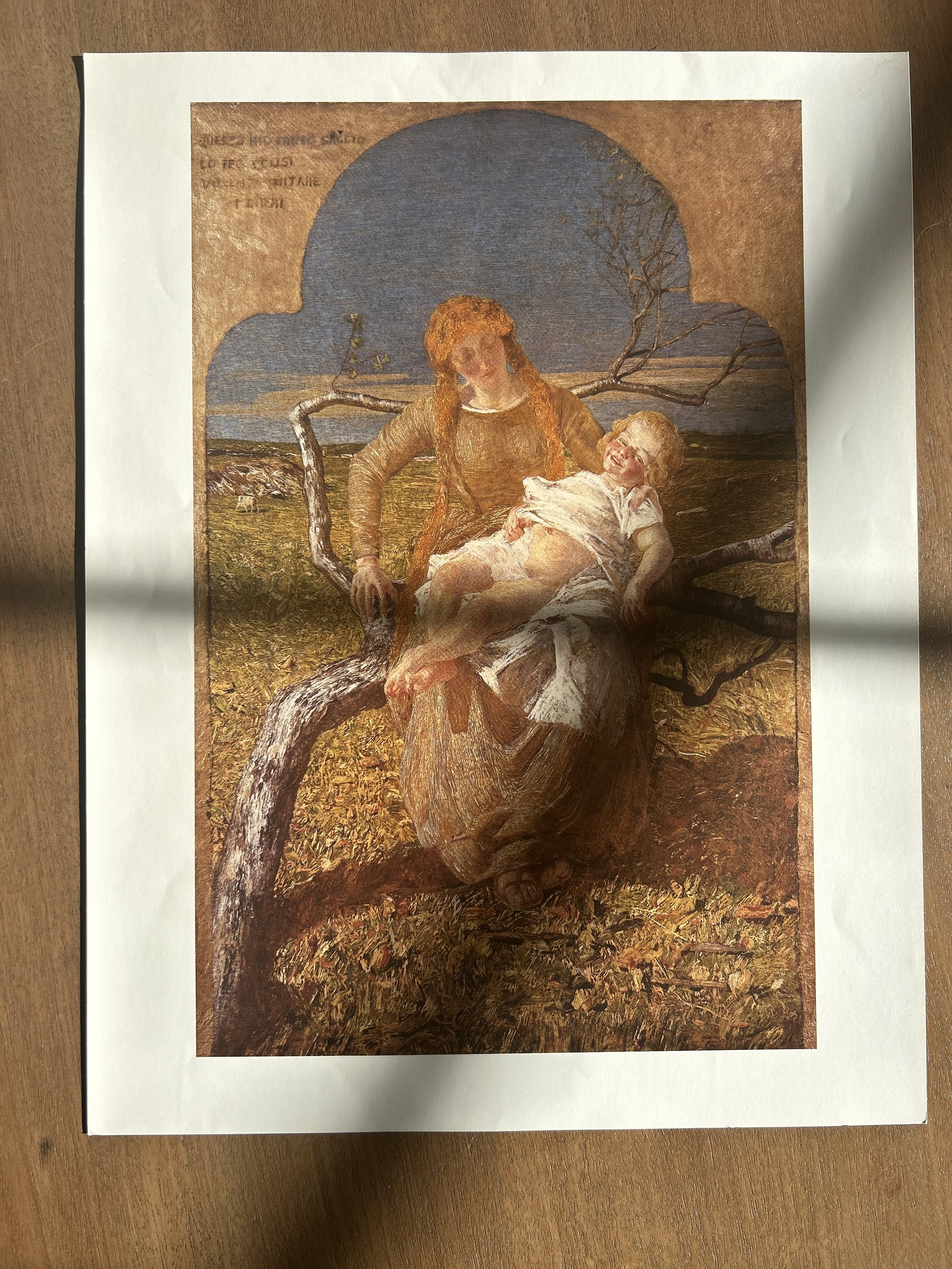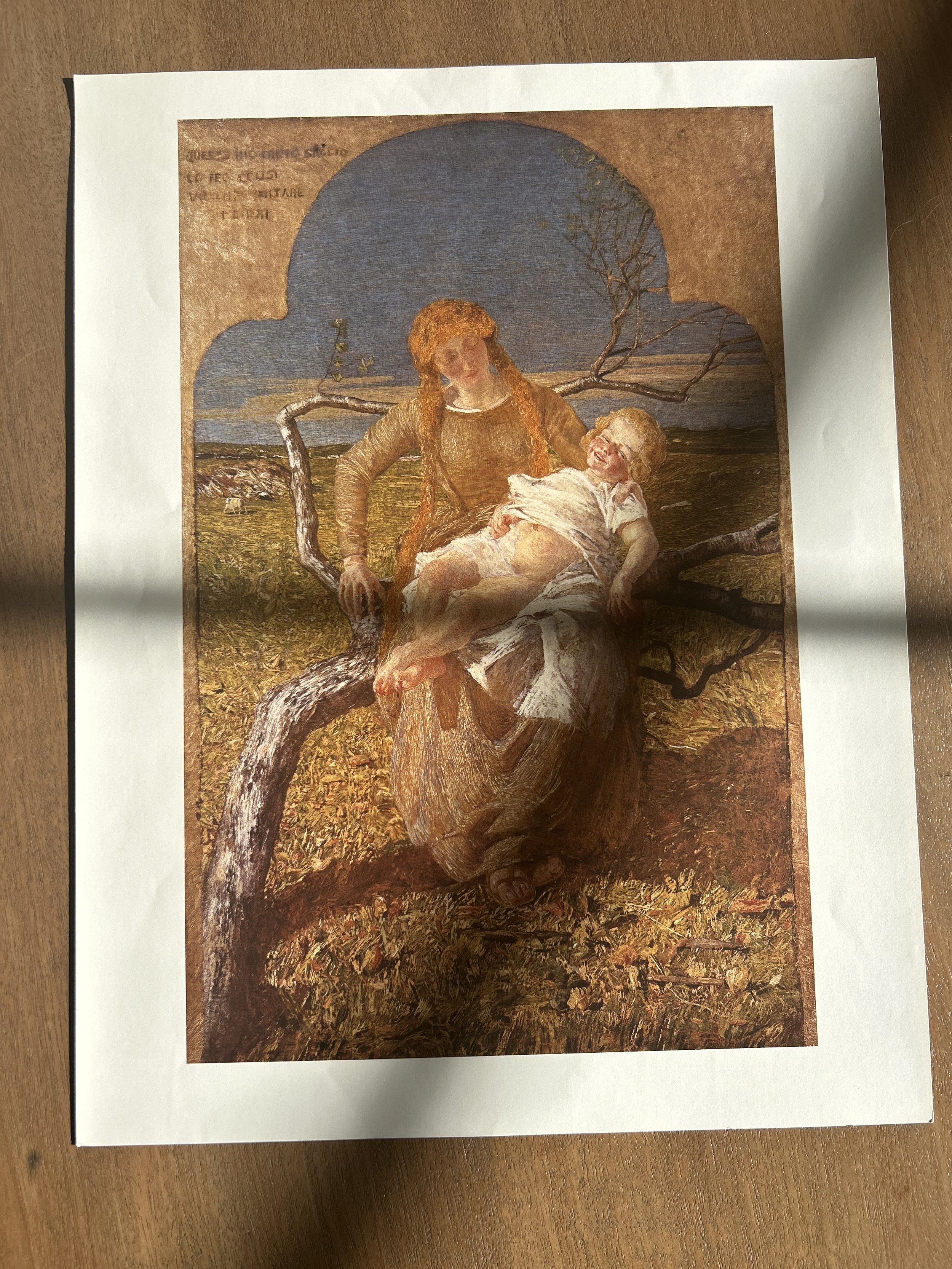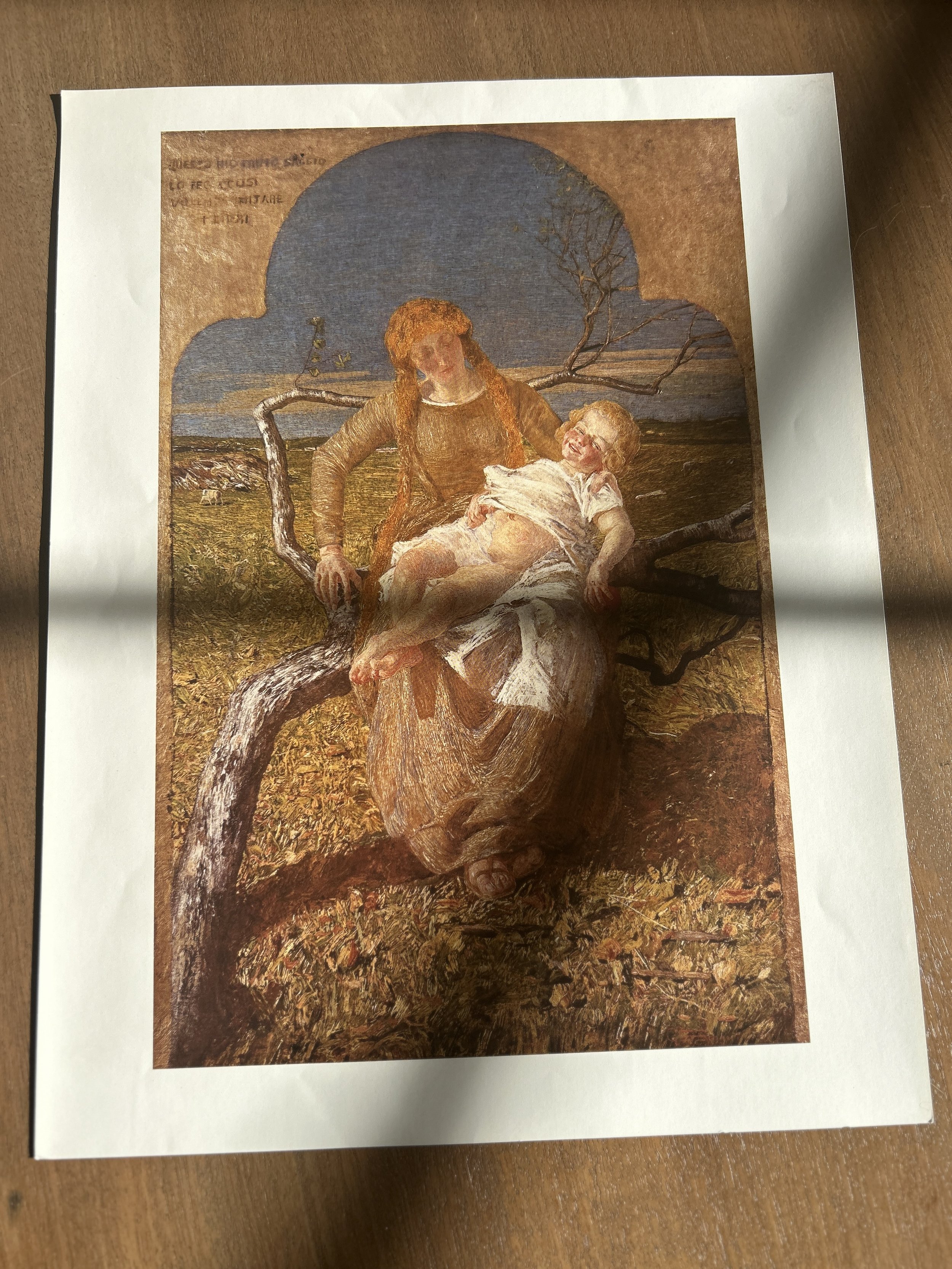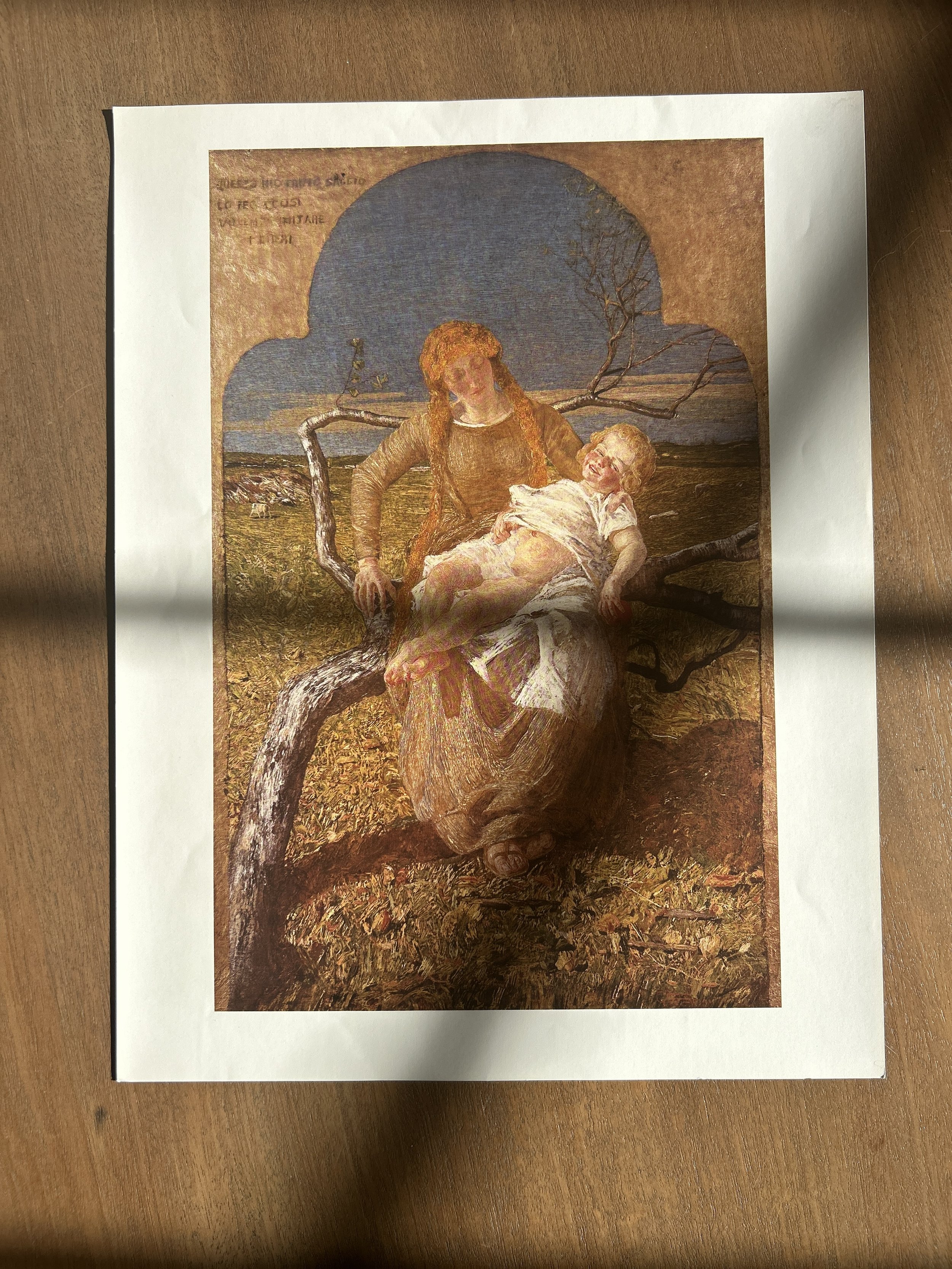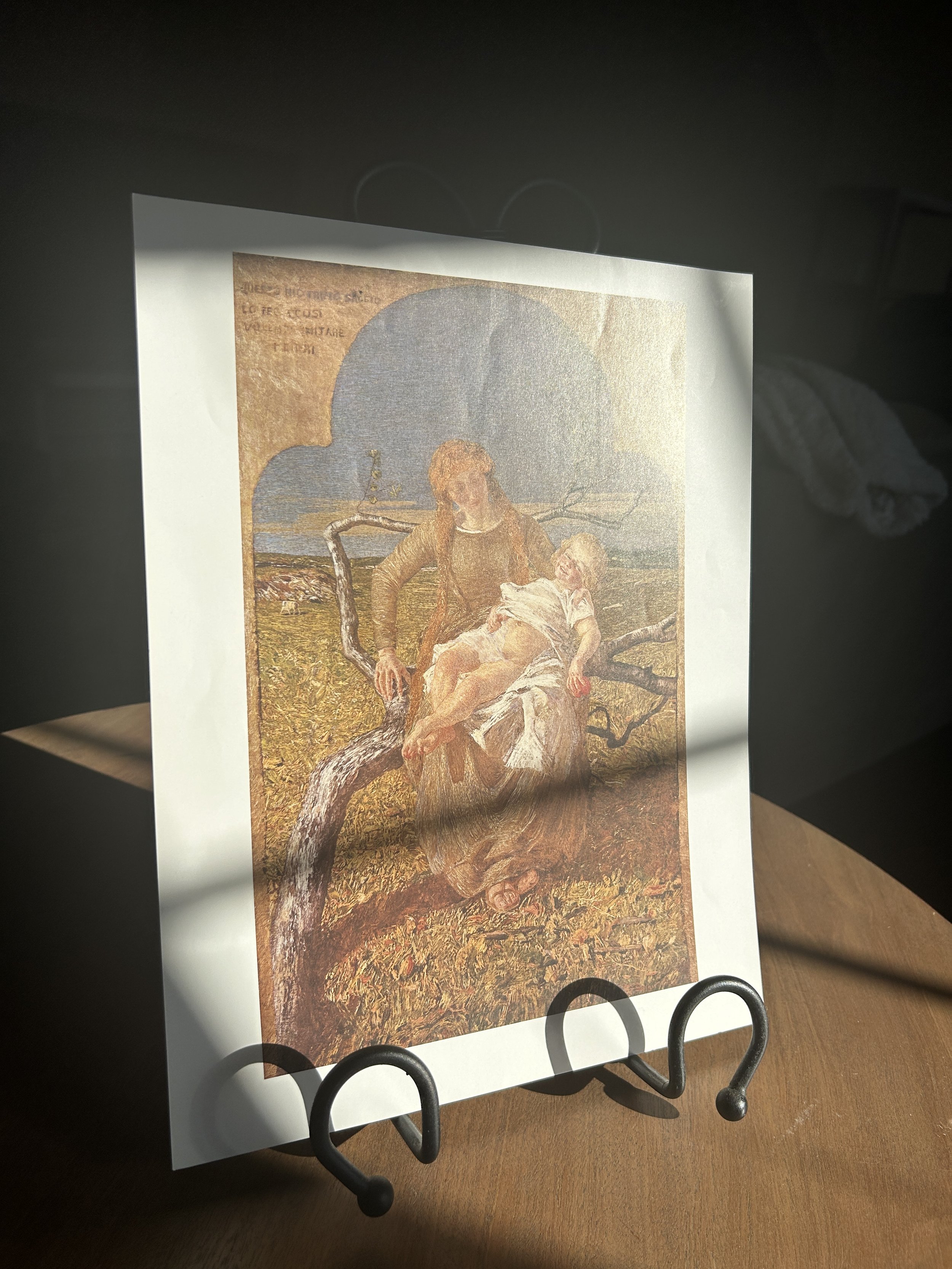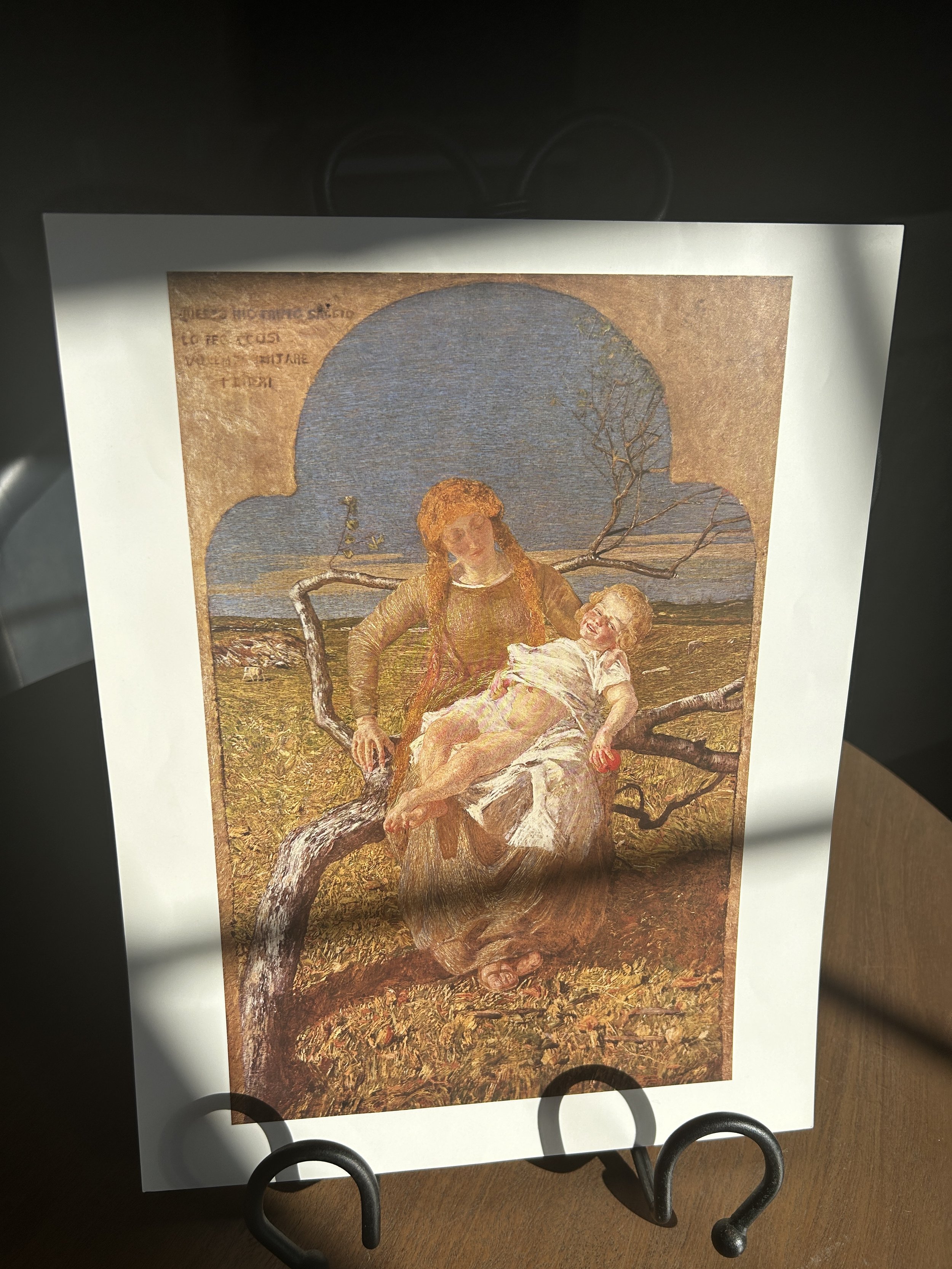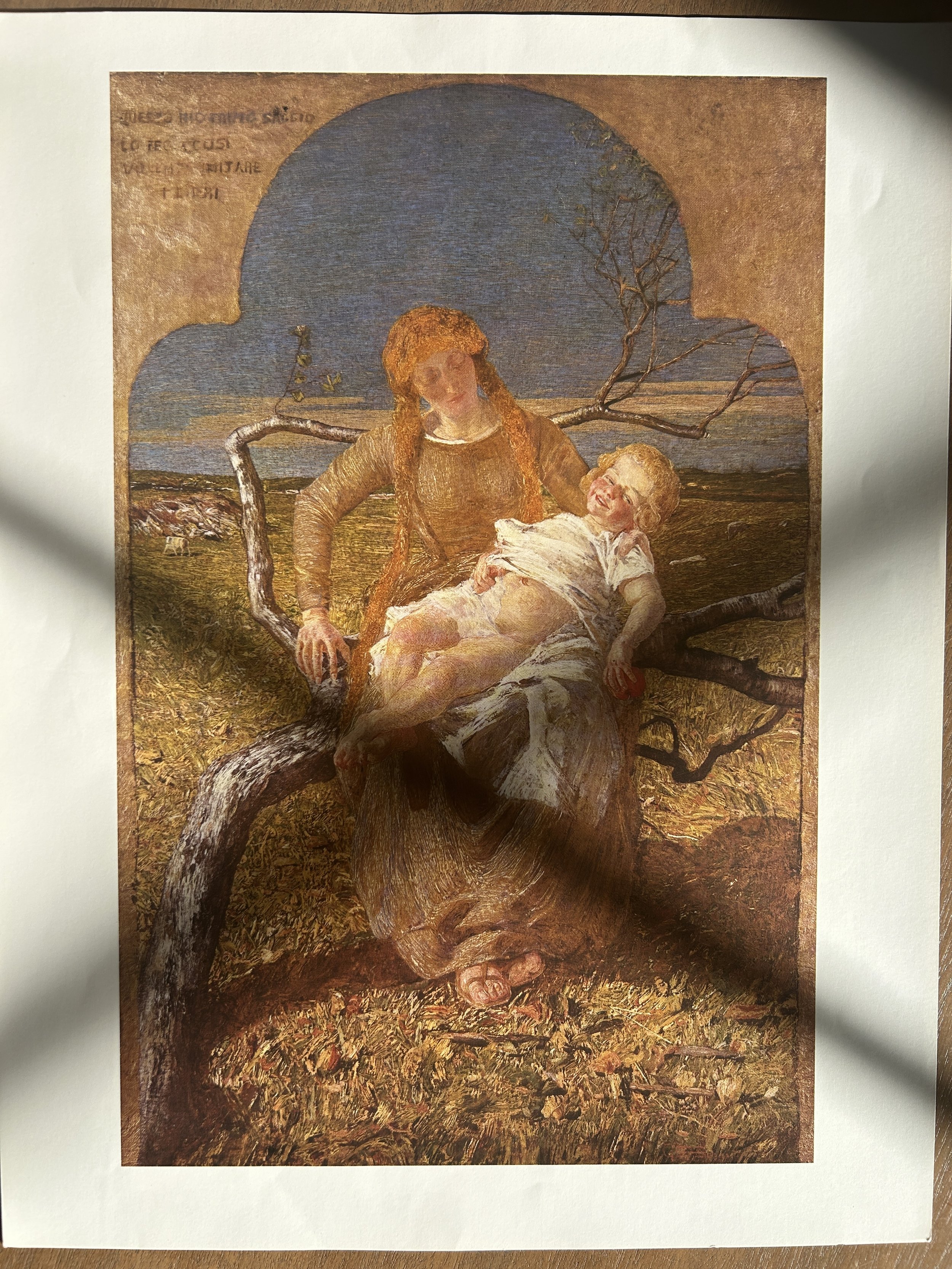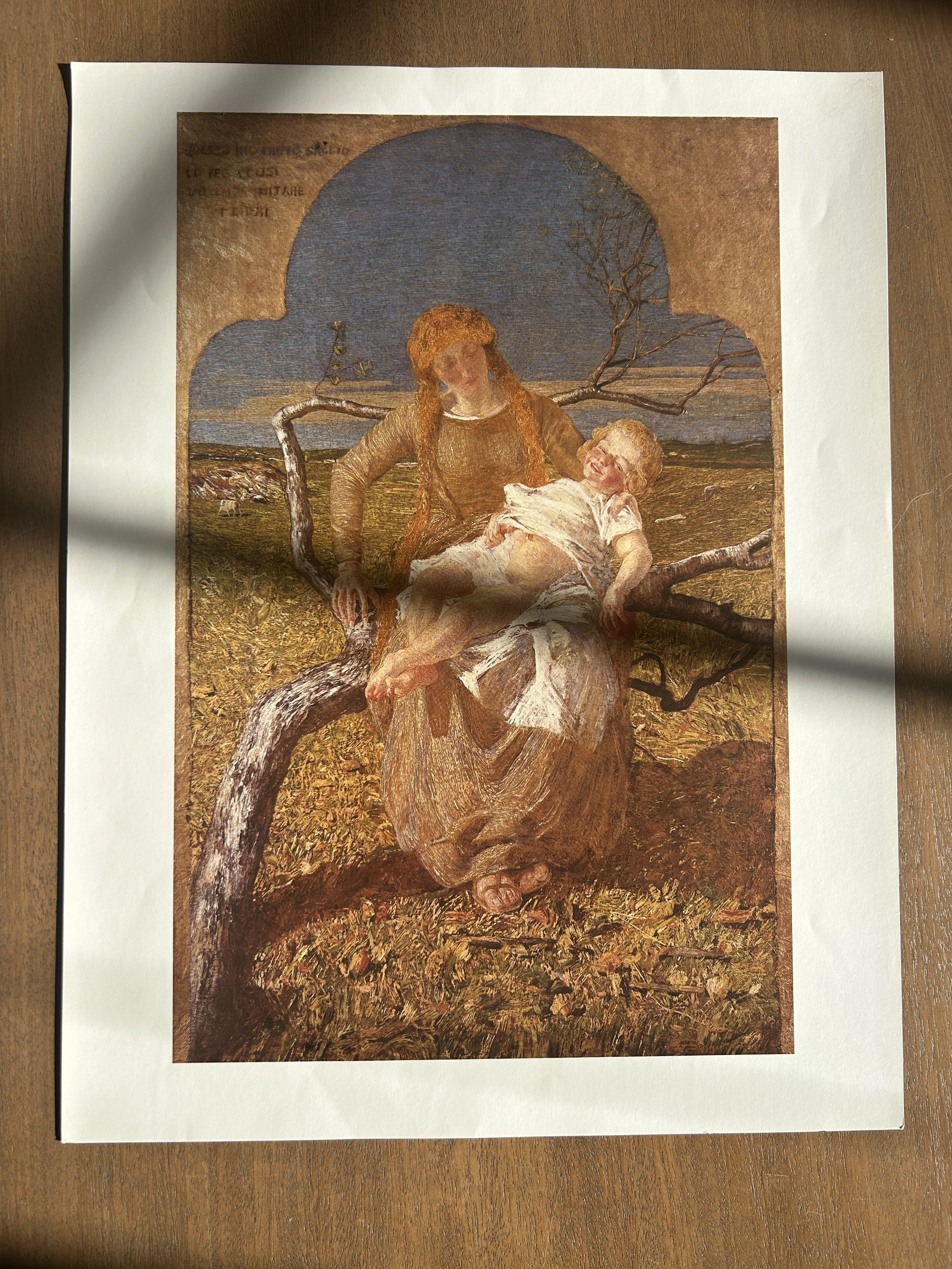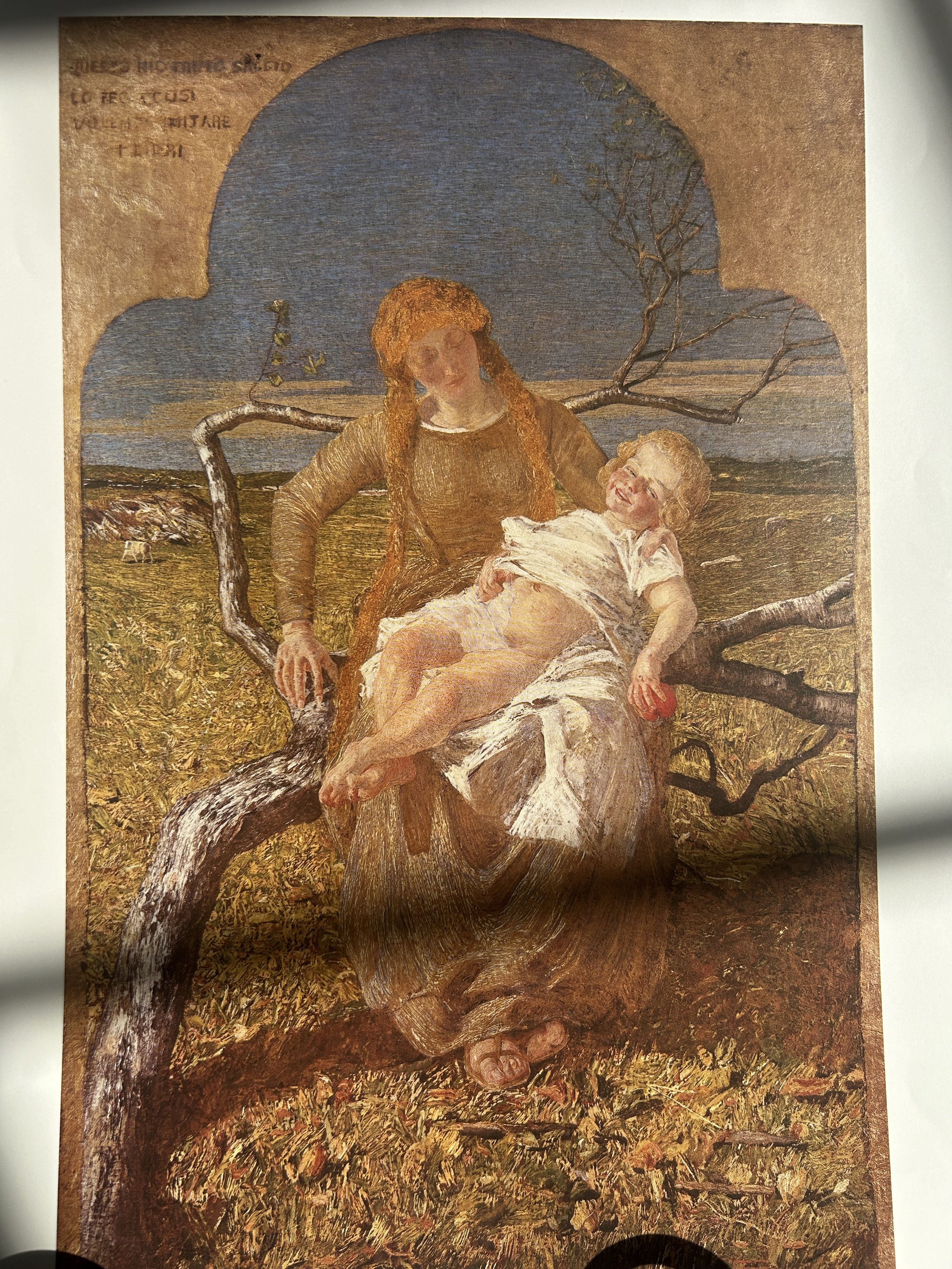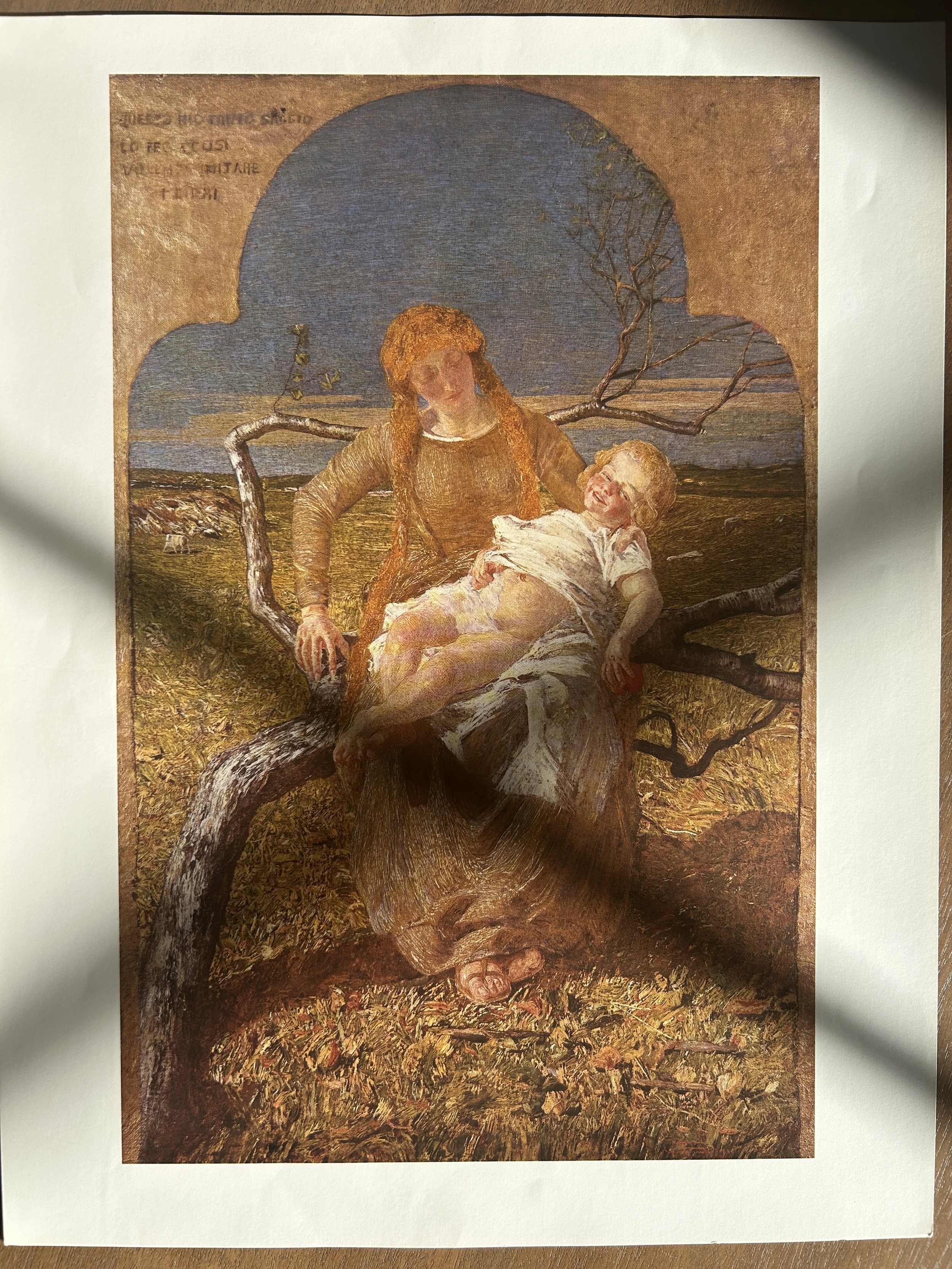"Fruit of love"by Giovanni Segantini, print
These are musuem quality prints for the artist work portfolio, printed in 1974.
Size 10.5×13.5
Giovanni Segantini (15 January 1858 – 28 September 1899) was an Italian painter known for his large pastoral landscapes of the Alps.
He was one of the most famous artists in Europe in the late 19th century, and his paintings were collected by major museums.
In later life he combined a Divisionist painting style with Symbolist images of nature. He was active in Switzerland during the last period of his life. Giovanni Battista Emanuele Maria Segatini [sic] was born at Arco in Trentino, which was then part of the County of Tyrol in the Austro-Hungarian Empire. He later changed his family name by adding another "n" after the "a".”
These are musuem quality prints for the artist work portfolio, printed in 1974.
Size 10.5×13.5
Giovanni Segantini (15 January 1858 – 28 September 1899) was an Italian painter known for his large pastoral landscapes of the Alps.
He was one of the most famous artists in Europe in the late 19th century, and his paintings were collected by major museums.
In later life he combined a Divisionist painting style with Symbolist images of nature. He was active in Switzerland during the last period of his life. Giovanni Battista Emanuele Maria Segatini [sic] was born at Arco in Trentino, which was then part of the County of Tyrol in the Austro-Hungarian Empire. He later changed his family name by adding another "n" after the "a".”
These are musuem quality prints for the artist work portfolio, printed in 1974.
Size 10.5×13.5
Giovanni Segantini (15 January 1858 – 28 September 1899) was an Italian painter known for his large pastoral landscapes of the Alps.
He was one of the most famous artists in Europe in the late 19th century, and his paintings were collected by major museums.
In later life he combined a Divisionist painting style with Symbolist images of nature. He was active in Switzerland during the last period of his life. Giovanni Battista Emanuele Maria Segatini [sic] was born at Arco in Trentino, which was then part of the County of Tyrol in the Austro-Hungarian Empire. He later changed his family name by adding another "n" after the "a".”

